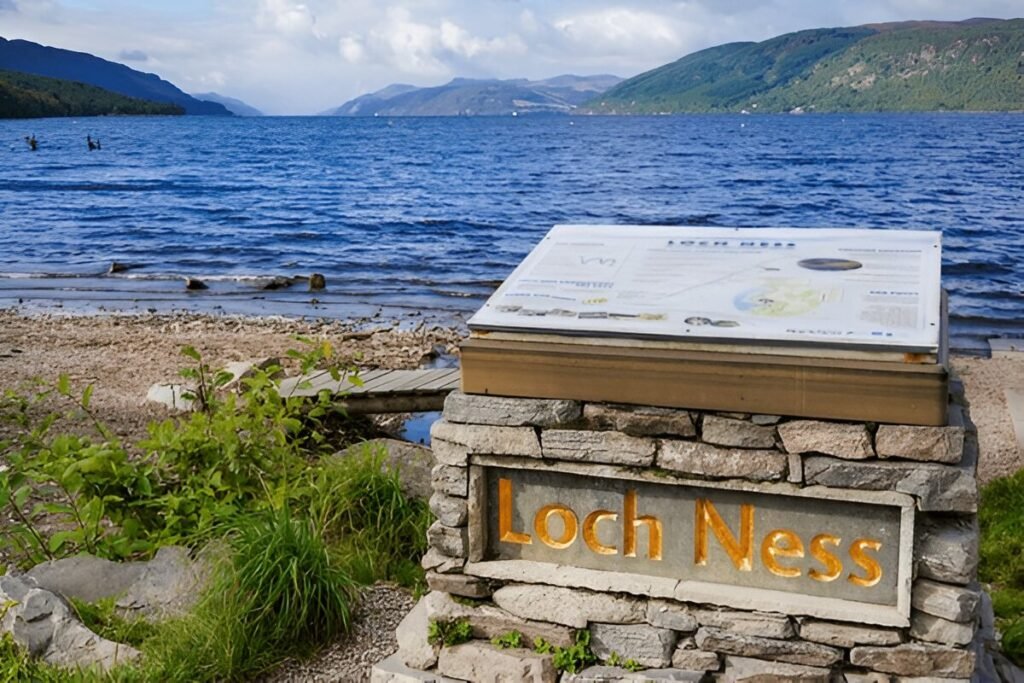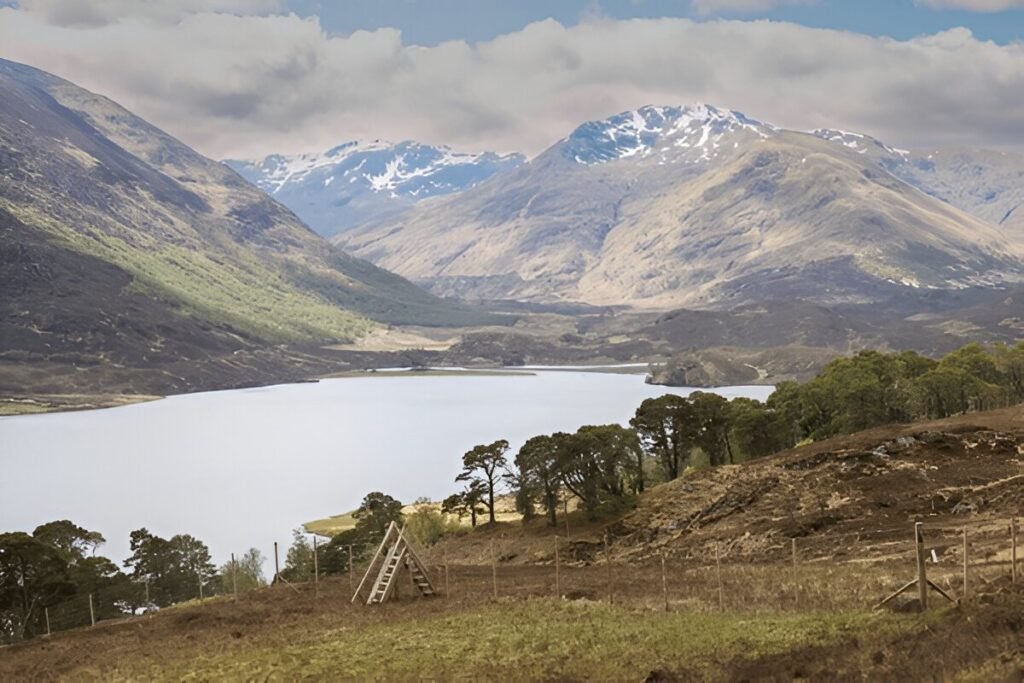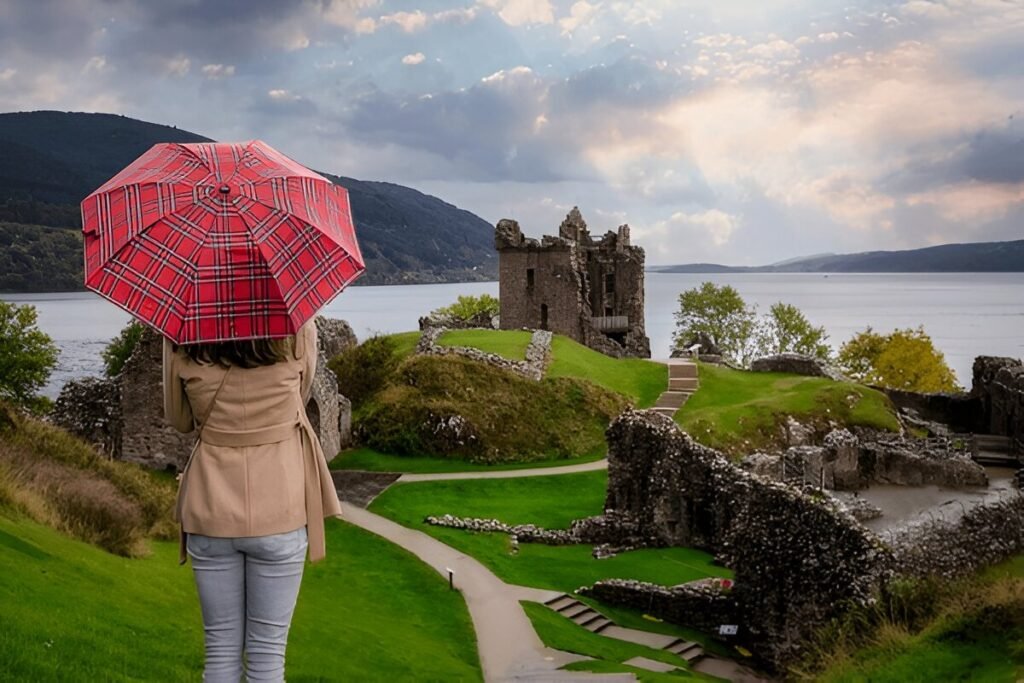Introduction
Loch Ness is one of Scotland’s most famous and mysterious destinations. Stretching over 23 miles (37 km) and plunging to depths of 755 feet (230 meters), this vast freshwater loch has fascinated visitors for centuries. Known worldwide for the legend of the Loch Ness Monster, or “Nessie,” Loch Ness offers more than just mythical tales—it boasts stunning landscapes, ancient castles, and diverse wildlife.
In this blog, we will explore the myths and legends surrounding Loch Ness, its breathtaking natural wonders, and the exciting activities that make it a must-visit destination in Scotland.
The Myth and Legend of the Loch Ness Monster

Loch Ness is synonymous with one of the world’s most enduring mysteries—the Loch Ness Monster. Stories of a strange creature lurking beneath its dark waters have captivated imaginations for centuries.
Origins of the Legend
The first recorded sighting of Nessie dates back to 565 AD, when St. Columba, an Irish monk, reportedly encountered a “water beast” in the River Ness. However, it wasn’t until the 20th century that the legend gained global attention.
The Surge of Nessie Sightings
- 1933: A couple driving along the loch claimed to have seen a large creature with a long neck crossing the road before disappearing into the water.
- 1934: The famous “Surgeon’s Photograph” was published, allegedly showing Nessie’s long neck emerging from the loch (later revealed to be a hoax).
- Modern Day: Despite scientific studies and sonar explorations, no conclusive evidence has been found. However, occasional sightings still make headlines, keeping the mystery alive.
Scientific Explanations and Theories
While some believe Nessie could be a prehistoric plesiosaur, others suggest alternative explanations:
- Misidentified Animals – Large fish, eels, or even seals could be mistaken for a monster.
- Wave and Light Effects – The loch’s dark, peaty waters and natural wave patterns can create optical illusions.
- Tourism and Folklore – Nessie’s legend has boosted Loch Ness tourism, making it a celebrated myth.
Whether real or imagined, Nessie remains a beloved icon of Scottish folklore.
The Natural Wonders of Loch Ness

Beyond its mythical reputation, Loch Ness is a stunning natural wonder with breathtaking scenery and rich biodiversity.
The Deep, Mysterious Waters
Loch Ness contains more water than all the lakes in England and Wales combined! Due to its great depth and high peat content, the loch remains dark and mysterious, adding to its eerie atmosphere.
Surrounding Landscapes and Wildlife
- Rolling Hills and Forests – The loch is framed by the picturesque Great Glen, a fault line stretching across Scotland.
- Wildlife – The area is home to red deer, otters, ospreys, and golden eagles. You might even spot playful dolphins in the Moray Firth near Inverness.
- Spectacular Sunsets – Loch Ness offers mesmerizing views at dusk, with mist rolling over the water and the sky painted in shades of orange and purple.
Top Attractions Around Loch Ness
1. Urquhart Castle: A Window into Scotland’s Past
One of Scotland’s most picturesque castles, Urquhart Castle sits on the banks of Loch Ness, offering incredible views.
Why Visit Urquhart Castle?
- Historic Significance – Dating back to the 13th century, the castle played a key role in the Wars of Scottish Independence.
- Dramatic Ruins – Though largely destroyed in 1692, its remaining towers and walls tell a tale of medieval grandeur.
- Nessie Lookout Spot – The perfect place to scan the loch for any unusual movements!
2. The Loch Ness Centre & Exhibition
Located in Drumnadrochit, this museum explores the history, science, and folklore surrounding Loch Ness.
What to Expect:
- Nessie Investigations – Learn about past scientific efforts to find Nessie.
- Loch Ness Ecology – Discover the unique underwater world of the loch.
- Interactive Displays – A fun, educational experience for all ages.
3. The Caledonian Canal and Fort Augustus
The Caledonian Canal connects Loch Ness to other Scottish lochs, making it a fantastic route for boating and kayaking.
Things to Do in Fort Augustus:
- Watch boats pass through the canal locks.
- Take a boat cruise for panoramic views of the loch.
- Walk along the scenic canal paths.
4. Dores Beach: A Peaceful Escape
For a more relaxed experience, visit Dores Beach on the northern shore. This pebbled beach offers:
- Uninterrupted views of Loch Ness
- A great spot for picnics and photography
- A quiet alternative to busier tourist spots
Activities to Experience at Loch Ness

1. Boat Cruises and Nessie Hunting
Several companies offer boat trips on Loch Ness, providing a unique way to explore the loch’s beauty.
Best Cruise Options:
- Jacobite Cruises – Offers a mix of sightseeing and history.
- Loch Ness by Jacobite – Features sonar technology for Nessie hunting.
- Highland Explorer Tours – A guided tour combining Loch Ness with other Highland attractions.
2. Hiking and Cycling Trails
The Great Glen Way is a long-distance trail that runs alongside Loch Ness, perfect for hikers and cyclists.
Best Hiking Spots:
- Falls of Foyers – A spectacular waterfall near the loch’s eastern shore.
- South Loch Ness Trail – A quieter route with beautiful views.
3. Kayaking and Water Sports
For adventure seekers, kayaking, paddleboarding, and even wild swimming are possible in Loch Ness, though the water is quite cold year-round!
Conclusion
Loch Ness is a place where myth and reality blend seamlessly. Whether you come in search of Nessie, to explore historic castles, or to soak in the natural beauty, Loch Ness never fails to enchant. Its deep waters, rugged landscapes, and fascinating history make it a must-visit destination in Scotland.












